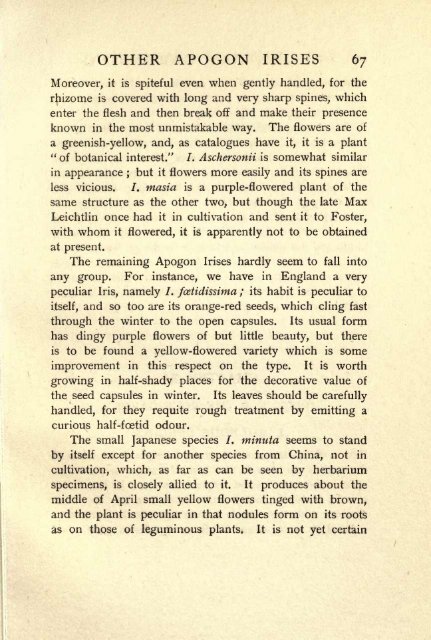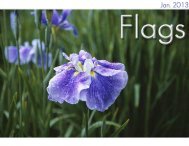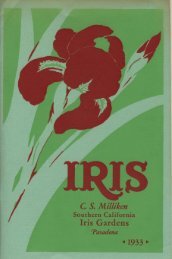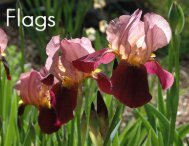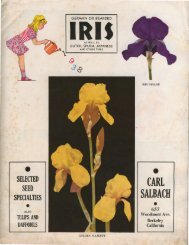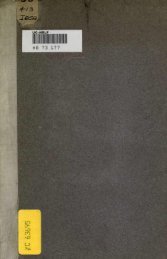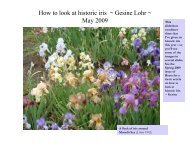Irises - Historic Iris Preservation Society
Irises - Historic Iris Preservation Society
Irises - Historic Iris Preservation Society
You also want an ePaper? Increase the reach of your titles
YUMPU automatically turns print PDFs into web optimized ePapers that Google loves.
OTHER APOGON IRISES 67<br />
Moreover, it is spiteful even when gently handled, for the<br />
rhizome is covered with long and very sharp spines, which<br />
enter the flesh and then break off and make their presence<br />
known in the most unmistakable way. The flowers are of<br />
a greenish-yellow, and, as catalogues have it,<br />
it is a plant<br />
" of botanical interest." I. Aschersonii is somewhat similar<br />
in appearance ;<br />
but it flowers more easily and its spines are<br />
less vicious. /. masia is a purple-flowered plant of the<br />
same structure as the other two, but though the late Max<br />
Leichtlin once had it in cultivation and sent it to Foster,<br />
with whom it<br />
flowered, it is apparently not to be obtained<br />
at present.<br />
The remaining Apogon <strong><strong>Iris</strong>es</strong> hardly<br />
seem to fall into<br />
any group. For instance, we have in England a very<br />
peculiar <strong>Iris</strong>, namely /. fcetidissima ; its habit is peculiar to<br />
itself, and so too are its<br />
orange-red seeds, which cling fast<br />
through the winter to the open capsules. Its usual form<br />
has dingy purple flowers of but little beauty, but there<br />
is to be found a yellow-flowered variety which is some<br />
improvement in this respect on the type. It is worth<br />
growing in half-shady places for the decorative value of<br />
the seed capsules in winter. Its leaves should be carefully<br />
handled, for they requite rough treatment by emitting a<br />
curious half-foetid odour.<br />
The small Japanese species /. minuta seems to stand<br />
by itself except for another species from China, not in<br />
cultivation, which, as far as can be seen by herbarium<br />
specimens, is closely allied to it. It produces about the<br />
middle of April small yellow flowers tinged with brown,<br />
and the plant is peculiar in that nodules form on its roots<br />
as on those of leguminous plants. It is not yet certain


